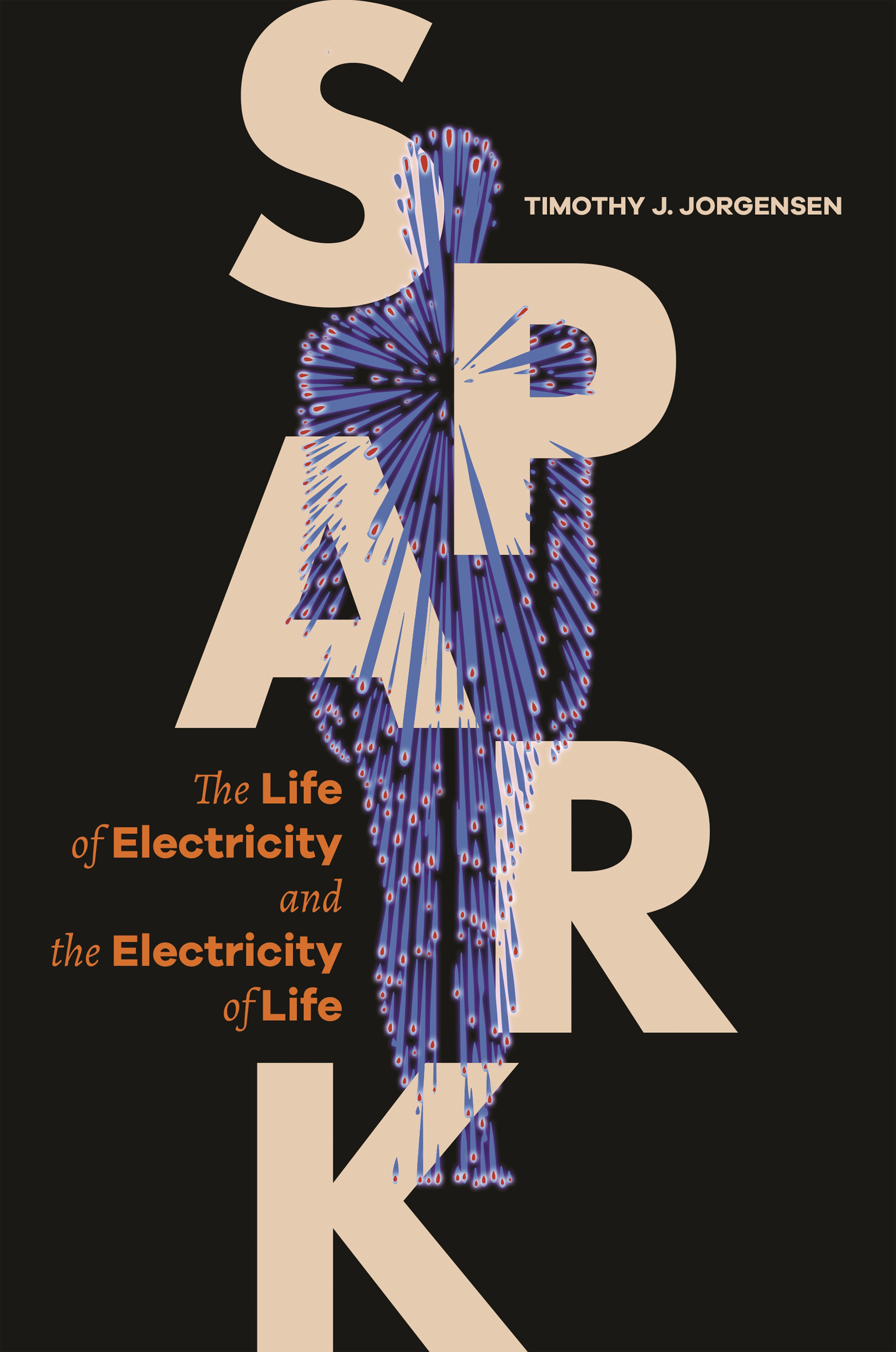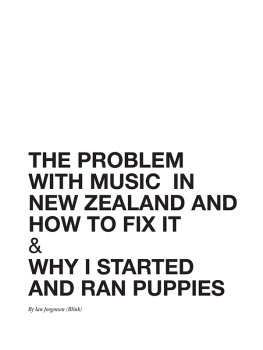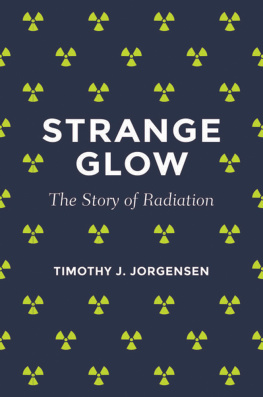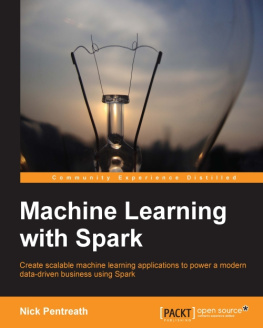Timothy J. Jorgensen - Spark
Here you can read online Timothy J. Jorgensen - Spark full text of the book (entire story) in english for free. Download pdf and epub, get meaning, cover and reviews about this ebook. year: 2021, publisher: Princeton University Press, genre: Non-fiction. Description of the work, (preface) as well as reviews are available. Best literature library LitArk.com created for fans of good reading and offers a wide selection of genres:
Romance novel
Science fiction
Adventure
Detective
Science
History
Home and family
Prose
Art
Politics
Computer
Non-fiction
Religion
Business
Children
Humor
Choose a favorite category and find really read worthwhile books. Enjoy immersion in the world of imagination, feel the emotions of the characters or learn something new for yourself, make an fascinating discovery.

- Book:Spark
- Author:
- Publisher:Princeton University Press
- Genre:
- Year:2021
- Rating:5 / 5
- Favourites:Add to favourites
- Your mark:
- 100
- 1
- 2
- 3
- 4
- 5
Spark: summary, description and annotation
We offer to read an annotation, description, summary or preface (depends on what the author of the book "Spark" wrote himself). If you haven't found the necessary information about the book — write in the comments, we will try to find it.
Spark — read online for free the complete book (whole text) full work
Below is the text of the book, divided by pages. System saving the place of the last page read, allows you to conveniently read the book "Spark" online for free, without having to search again every time where you left off. Put a bookmark, and you can go to the page where you finished reading at any time.
Font size:
Interval:
Bookmark:

SPARK
SPARK

THE LIFE OF ELECTRICITY AND THE ELECTRICITY OF LIFE
TIMOTHY J. JORGENSEN
PRINCETON UNIVERSITY PRESS
PRINCETON & OXFORD
Copyright 2021 by Timothy J. Jorgensen
Princeton University Press is committed to the protection of copyright and the intellectual property our authors entrust to us. Copyright promotes the progress and integrity of knowledge. Thank you for supporting free speech and the global exchange of ideas by purchasing an authorized edition of this book. If you wish to reproduce or distribute any part of it in any form, please obtain permission.
Requests for permission to reproduce material from this work should be sent to
Published by Princeton University Press
41 William Street, Princeton, New Jersey 08540
6 Oxford Street, Woodstock, Oxfordshire OX20 1TR
press.princeton.edu
All Rights Reserved
Library of Congress Cataloging-in-Publication Data
Names: Jorgensen, Timothy J., author.
Title: Spark : the life of electricity and the electricity of life / Timothy J. Jorgensen, Princeton University Press.
Description: Princeton : Princeton University Press, [2021] | Includes bibliographical references and index.
Identifiers: LCCN 2021026499 (print) | LCCN 2021026500 (ebook) | ISBN 9780691197838 (hardback) | ISBN 9780691232652 (ebook)
Subjects: LCSH: Electricity. | BISAC: SCIENCE / Physics / Electricity | SCIENCE / History
Classification: LCC QC527 .J66 2021 (print) | LCC QC527 (ebook) | DDC 537dc23
LC record available at https: / /lccn.loc.gov/2021026499
LC ebook record available at https: / /lccn.loc.gov/2021026500
Version 1.0
British Library Cataloging-in-Publication Data is available
Editorial: Ingrid Gnerlich, Maria Garcia, and Whitney Rauenhorst
Production Editorial: Natalie Baan
Production: Danielle Amatucci
Publicity: Kate Farquhar-Thomson and Sara Henning-Stout
Copyeditor: Jennifer McClain
Doom and Gloom
Words and Music by Mick Jagger and Keith Richards
Copyright 2012 Promopub B.V.
All Rights Administered by BMG Rights Management (US) LLC
All Right Reserved. Used by Permission.
Jacket art and design by Sukutangan
For my vivacious, bright, and beautiful wife, Helen. She gets the credit for first proposing I write a book about electricity from a biological perspective, a creative idea for which I am very grateful. My life would be severely lacking without her unwavering love and devotion.
(What she sees in me I have no idea.)
- ix
CURRENT EVENTS
Electricity is often called wonderful, beautiful; but it is so only in common with the other forces of nature.
MICHAEL FARADAY
We live in an electrical society. Most of our daily activities are powered, illuminated, and otherwise enhanced by electricity. If youve ever experienced a prolonged electrical power outage, you know what I mean. Yet, some people have curious ideas about what electricity actually is. They think of electricity as an alien physical force, outside of their bodies, thats confined within their electronic devices and channeled from appliance to appliance through wires. They dont appreciate that electricity is also a biological force, essential to the life of all animals that have a nervous system, and even those that dont.
Many people also are unaware that electricity is really the very foundation of life. Its the spark that brought the first primitive life-forms into existence and started them down the evolutionary path leading to todays complex species with sophisticated internal electrical systems. Life is nothing if not electrical. You might as well call it eLife.
This is a book about electricity from a biological perspective. That may seem an unusual approach, but I think its the best way to tell the story of electricity. Thats because many attributes of electricity were first discovered through the study of electricitys effects on bodily senses and muscle tissues. And, amazingly, almost everything we know about our nervous system comes from electrically probing nerves. So it might not be too surprising that electrical science and neurological science share a joint story.
Discoveries in the electrical and neurological fields leapfrogged each other over the centuries, as developments in one field enabled advancements in the other. The term electricity was first used in the late sixteenth century by the English scientist William Gilbert to describe his investigations of electricitys physical powers. And the term neurology was first used shortly thereafter by the English physician Thomas Willis to describe his studies of human reflexes and paralysis. Such neurological studies progressed from mere descriptions of neural anatomy to functional investigations of how the nervous system works, using targeted electrical stimulation as a probe.
But its not just nerves that respond to electrical signals. Muscle cells, including heart muscle, rely on electrical stimuli to control their mechanical functions. And even nonmuscle tissues send and receive electrical signals through the nervous system, as they report their status to, and receive their instructions from, the brain. In fact, virtually all of our bodily functions are electrically monitored and controlled.
Its because electrical regulation of cells, tissues, and organs is so vital to survival that disruption of the bodys electronics can be so damaging, and even lethal. With electricity all around us, we need to better know when, why, and how electricity kills. Fortunately, we have learned much about the lethal effects of electricity, especially when its delivered in large, abrupt doses, sometimes call jolts. This information is important for the prevention and treatment of severe electrical shocks.
Since its discovery, electricity has repeatedly been employed to treat various diseases. Hampered by poor understanding of human physiology, ignorance of the mechanisms of diseases, and misunderstanding of the role of electricity in the body, the track record of early electrical therapies was spotty, to say the least. Hair removal by electricity (hair electrolysis) is perhaps one of the few early electrical medical procedures that persists, little changed, to the present day.
After its early heyday, in the late nineteenth century, electrical therapy fell out of fashion and even became taboo within the medical community. But as the electrical and neurological sciences have matured, there has been a resurgence of interest in using electricity to treat diseases. This is particularly true for treatments of neurological disorders, such as electroconvulsive therapy for depression and deep brain stimulation for Parkinsons disease, but is also true for many other illnesses. The use of electricity for medical purposes ranges from the mental control of prosthetic limbs by amputees to the restoration of vision to the blind. In the future, electricity may even replace many drugs as first-line therapies for treating a variety of diseases. As such, it might be possible to avoid the adverse side effects of those drugs, which can often be severe. But we are also learning that electricitys use to treat anxiety can, unfortunately, sometimes be nearly as addictive as drugs.
This book is not a science textbook on electricity or electrophysiology. If you are an electrical engineer or an electrophysiologist, this book will not satisfy your specialized technological needs. Rather, it is my hope that the book will be accessible to the widest possible audience. I have, therefore, avoided technical jargon, and specifically focused on the stories about electricity that are important to understanding electricitys relationship to biology and health.
Font size:
Interval:
Bookmark:
Similar books «Spark»
Look at similar books to Spark. We have selected literature similar in name and meaning in the hope of providing readers with more options to find new, interesting, not yet read works.
Discussion, reviews of the book Spark and just readers' own opinions. Leave your comments, write what you think about the work, its meaning or the main characters. Specify what exactly you liked and what you didn't like, and why you think so.





